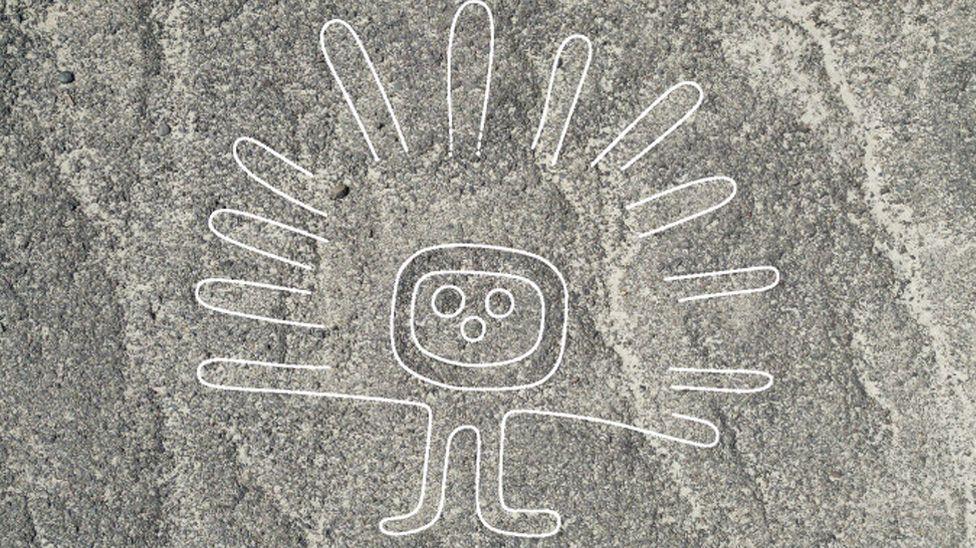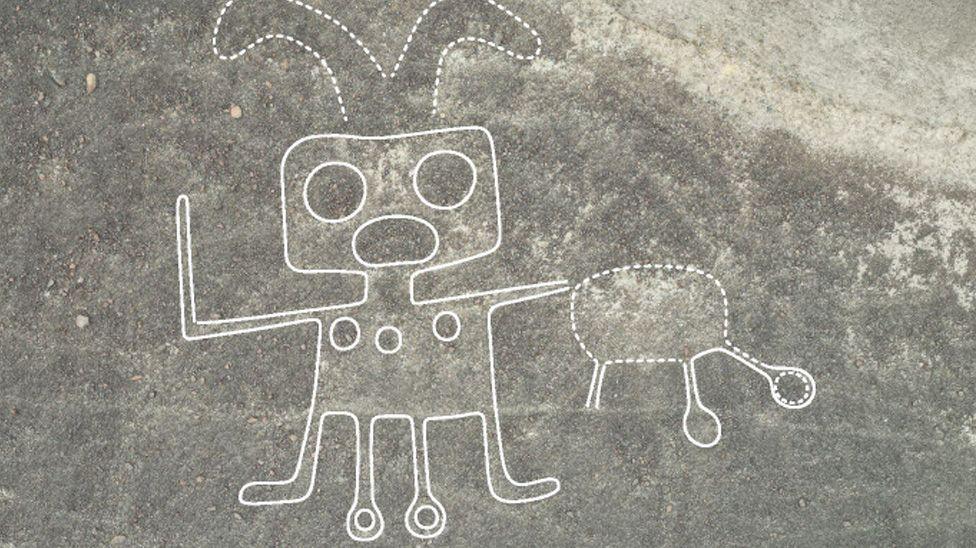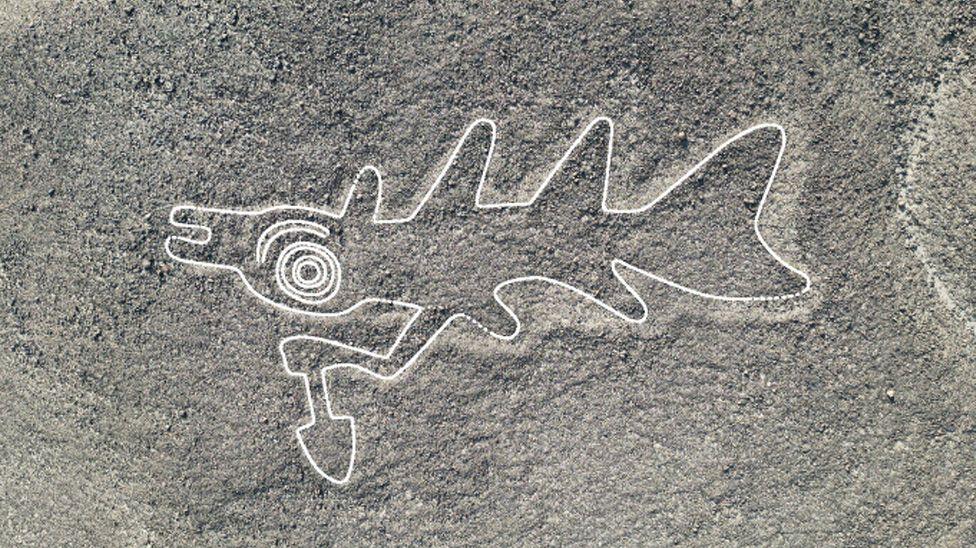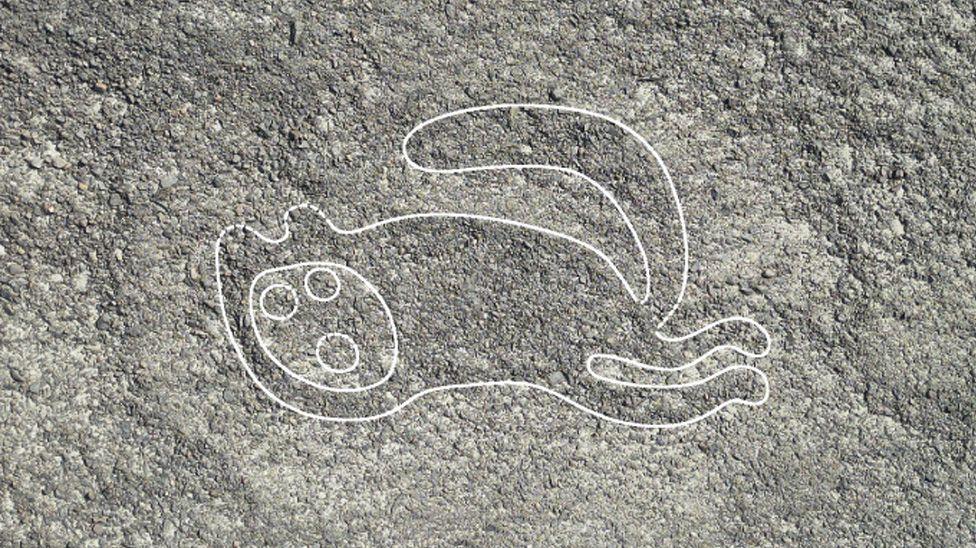AI helps discover ancient Nazca geoglyphs in Peru

The white outlines show the shape of the carvings more clearly
- Published
Hundreds of ancient geoglyphs have been discovered in Peru, in South America, with the help of AI.
A team of archaeologists from a Japanese University worked together with scientists from IBM Research, to discover 303 new geoglyphs in the Nazca Desert.
The geoglyphs - also known as the Nasca Lines - are mysterious artworks carved into the ground around 2,000 years ago by the ancient Nazca people.
The carvings are of plants and animals like parrots, cats, monkeys, killer whales and human-like figures with headdresses.
2000-year-old giant cat art found in Peru
- Published20 October 2020
Amazing Earth art seen from above
- Published2 December 2019
What are the Nasca geoglyphs?

Geoglyphs get their name from the words geo - meaning about the earth - and glyph - meaning a picture or symbol that represents a word.
It's not known why the ancient Nazca people made the geoglyphs, but scientists have come up with lots of theories, including that they were a sacred part of worship, or that they were related to calendars, astronomy or even a way to communicate.
The Nasca geoglyphs range massively in size from huge 90-metre-long wonders, to smaller nine metre-long carvings which are a bit trickier to find.
They were first discovered in the 1920s by archaeologists, and over the last century around 430 have been found, using technology like high-quality flying drone cameras.
How did AI help?

The new discoveries were made by a team of researchers led by Masato Sakai from from Yamagata University's Institute of Nazca, and technology company IBM’s Thomas J. Watson Research Center in New York.
They trained an AI programme to identify the symbols, using high-quality pictures of the previously discovered Nazca geoglyphs, taken by drones since 2020.
From this knowledge the programme then looked at new aerial drone pictures, and was able to discover possible locations for more glyphs.

The AI technology isn't still not quite as precise as experts would ideally like.
It suggested more than 47,000 potential locations in the 243 square miles of desert, which the human researchers narrowed down to 1,309 possible sites that they said had "high potential".
From these, 303 discoveries were made - meaning that in just six months of research, the researchers almost doubled the amount of known geoglyphs, in the 100 years since their first discovery.
The researchers say that although the AI technology isn't perfect yet, it was a real “game changer,” for helping to speed up their search time.
